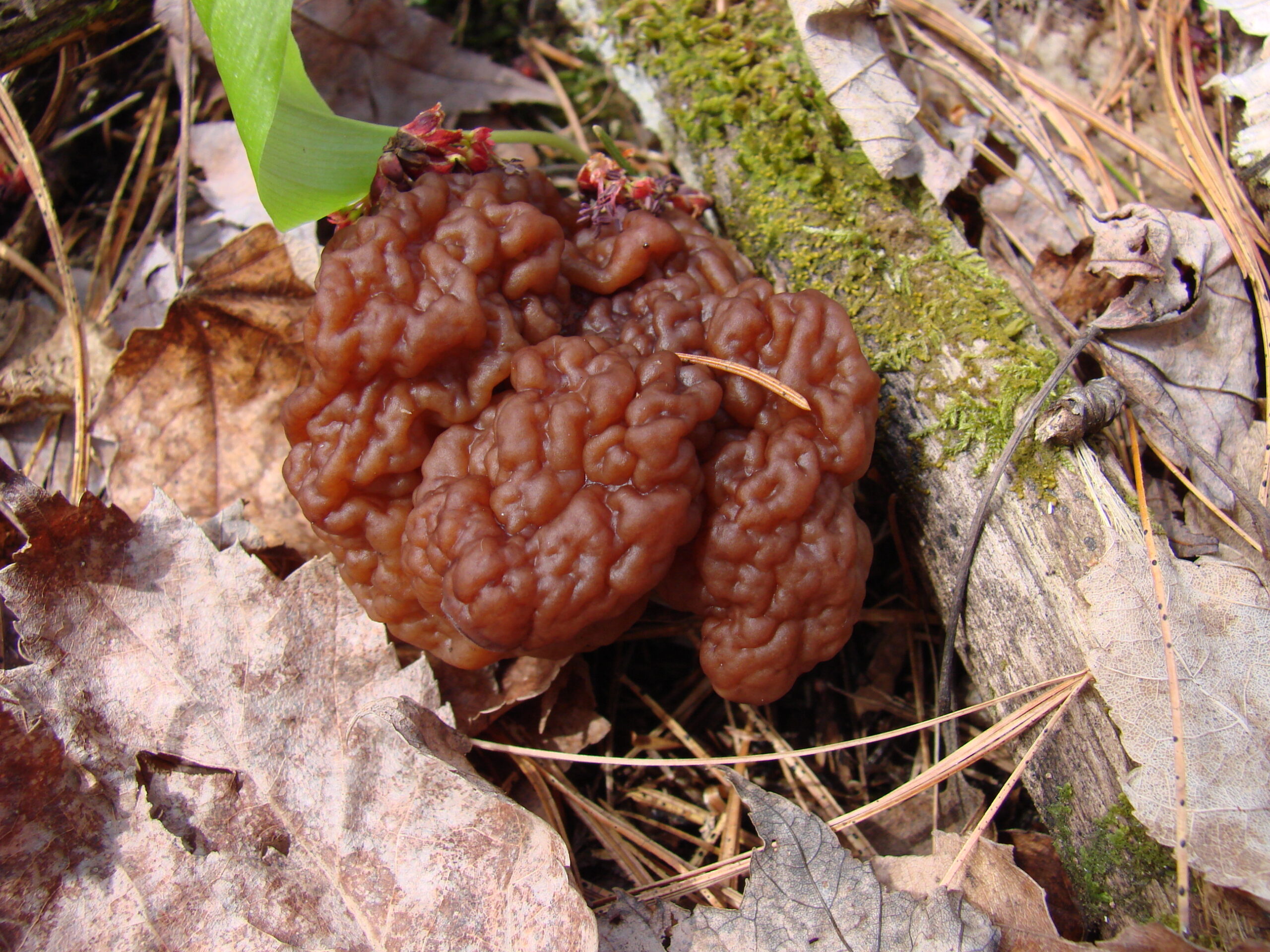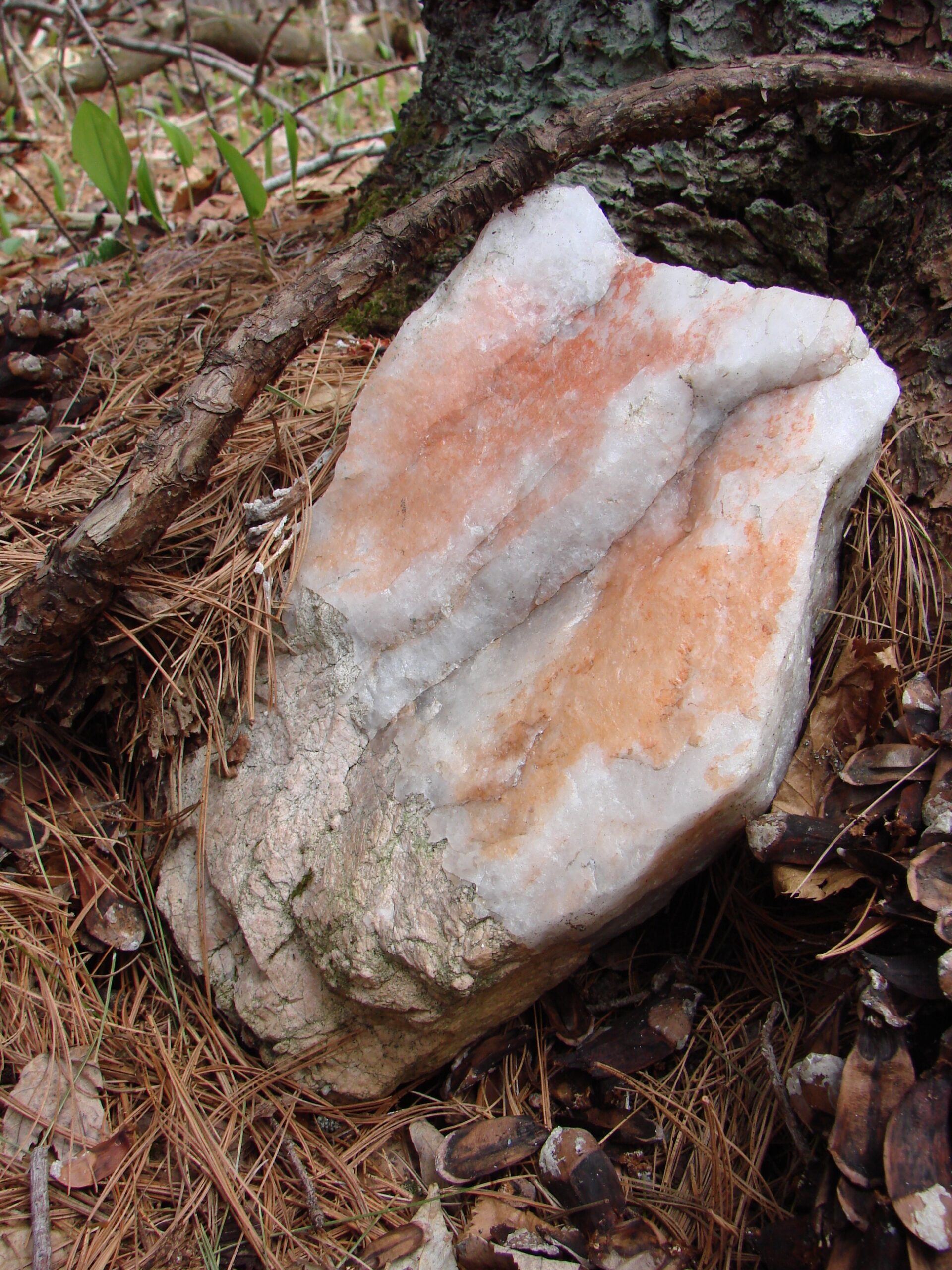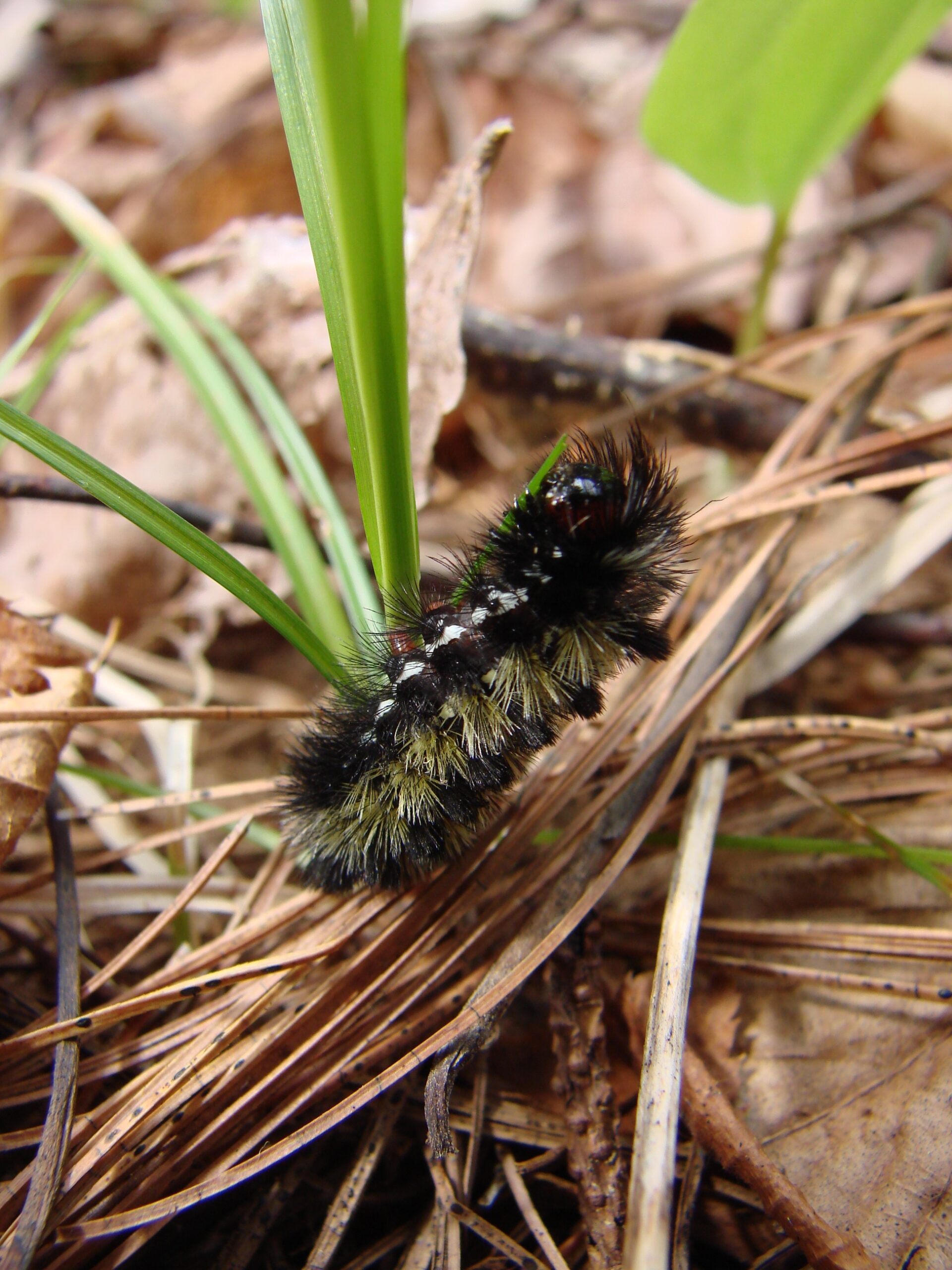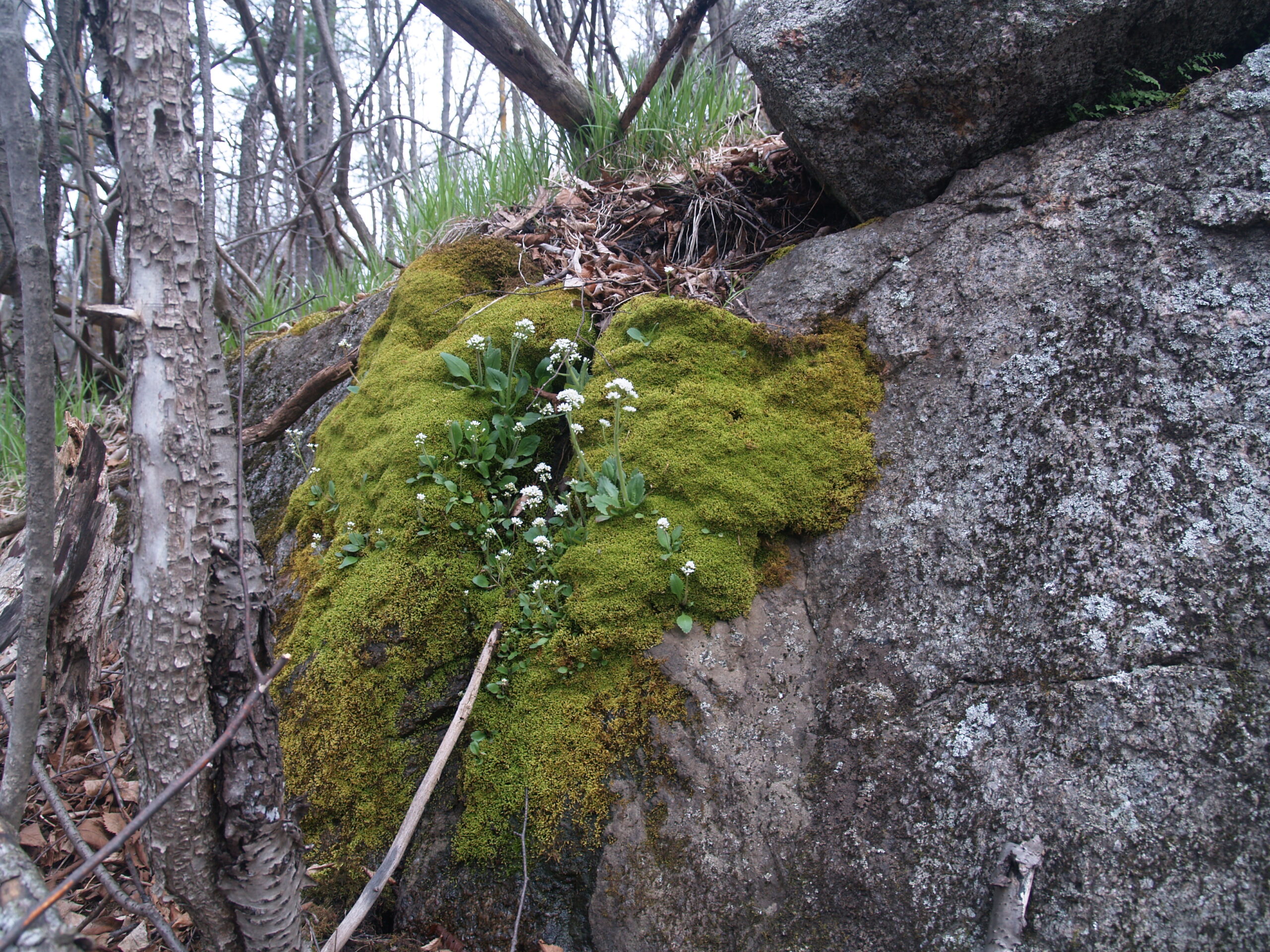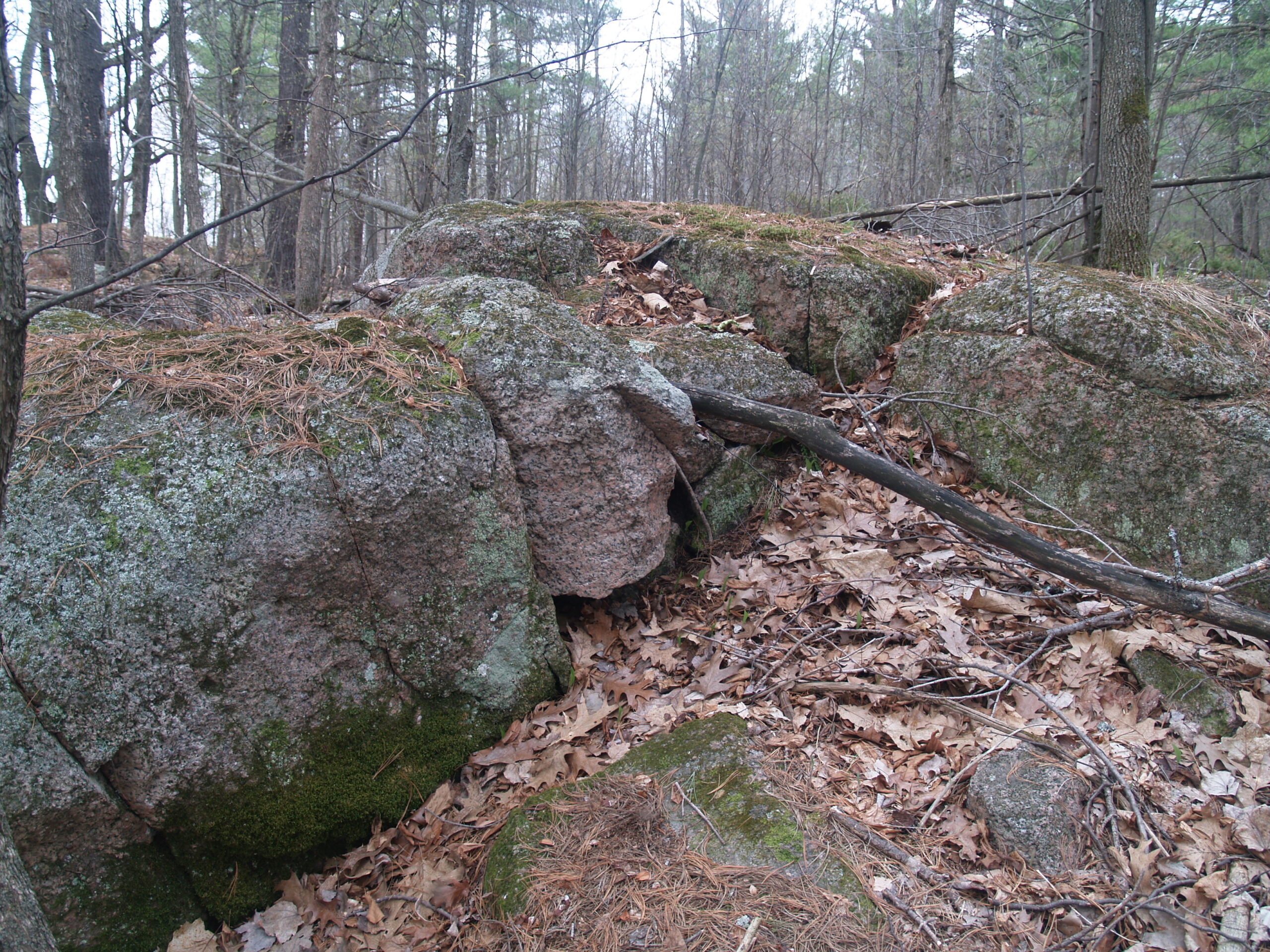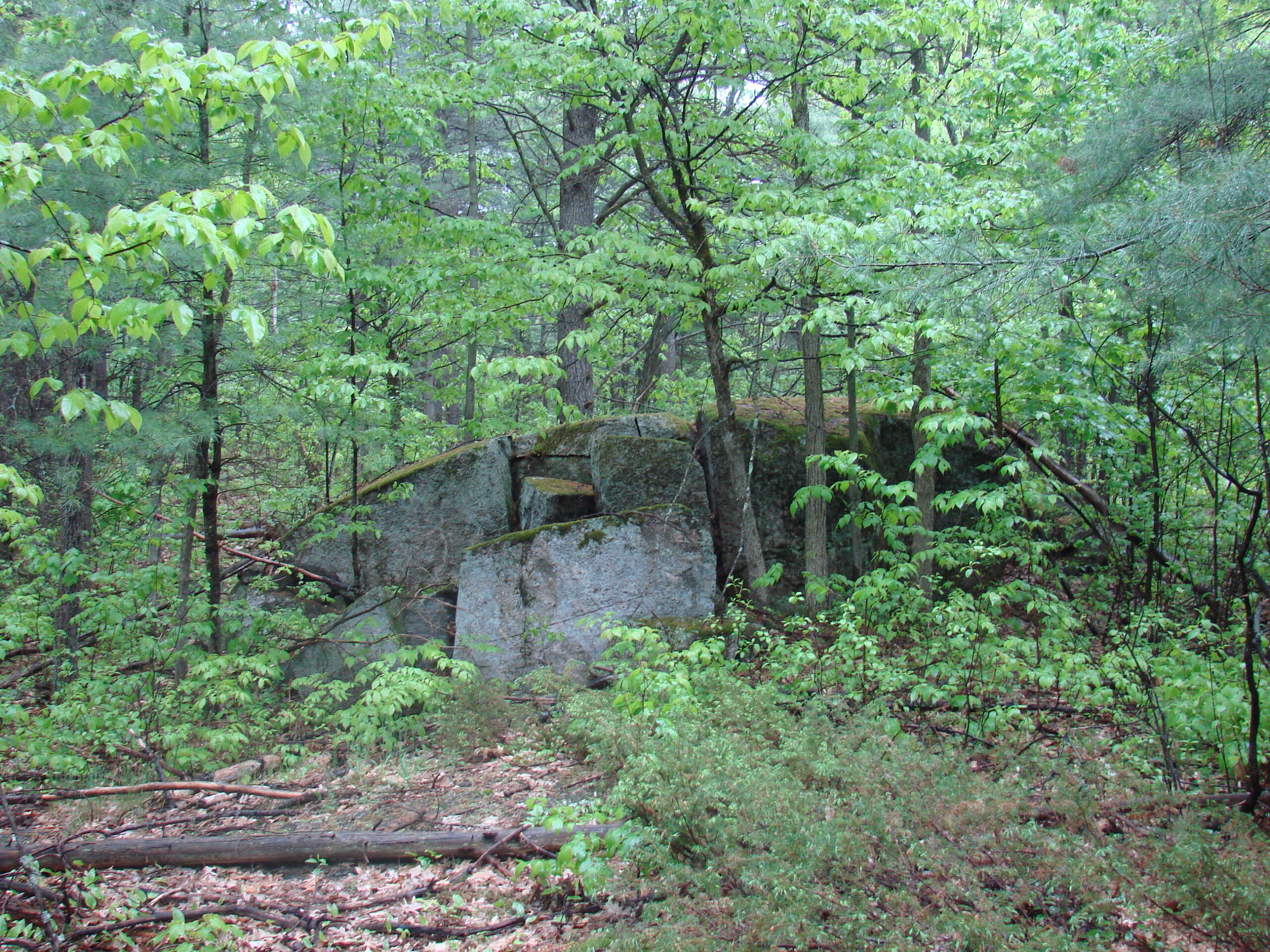The Whaleback Woodland Reserve’s small size, topography, and strategic location warrant the highest level of conservation protection, with no public access permitted. The Friends of Carp Hills will be partnering with MMLT to provide stewardship, monitoring and scientific research on the property.
History
In April, 2018, MMLT honoured Carolyn Canfield for her generous donation of the Whaleback Woodland Reserve in the Carp Hills. For over forty years Carolyn has had a deep interest in the permanent conservation of important ecological lands, particularly those facing mounting recreational and residential pressures. Her determination to make her own real contribution through the donation of her Carp Hills land to MMLT ensures that sensitive and fragile features of this property will now be conserved in perpetuity, and the ecological value of the Carp Ridge enhanced.
Nature Highlights
At Whaleback Woodland Reserve the evidence of intense glaciations is ever present with outcrops, glacial erratics and an over layer of glacial till in the depressions and crevasses. Exposed Precambrian Shield sculpted by glaciers explains the name “whaleback”, which is a colloquial term given to “a bedrock knoll smoothed and rounded on all sides by a glacier.”
The reserve consists of five principal ecological habitats:
1) a precipitous rocky escarpment. Red Oak, and Ironwood dominate this slope. Buckthorn and other shrubs are common. Bloodroot and Columbine can also be found there.
2) an upland forest. The predominant ecosystem of the reserve is well developed upland forest and is comprised of Red Oak, White Pine and Ironwood with a scattering of Sugar Maple, Bitternut Hickory, Butternut, White Birch, Red Maple and Trembling Aspen. Other species found there include Wild Sarsasparilla, Canada Mayflower, Rock Polypody, Marginal Shield Fern and Enchanter’s Nightshade.
3) some rocky barren outcrops. The more exposed areas are characterized by crustose lichens and three species of Reindeer Moss. Water can persist for some time at the edges forming damp depressions with a characteristic flora which can include wild strawberry, Bracken, Wintergreen, Stemless Lady-slipper, Pale Corydalis and others.
4) a half dozen vernal pools. These depressions within the upland forest can be quite deep and contain water which may persist well into summertime. They are bordered by Mountain Holly, Black Buckthorn, Partridge Berry, Sensitive Fern and sedges.
5) two small portions of a larger provincially significant wetland complex where permanent open water is present. These areas are characterized by typical wetland species such as Blue Flag, Sensitive Fern, Impatiens, Virginia Creeper, Swamp Meadow Grass, Mountain Holly, Elm, Flowering Raspberry and aquatic sedges. Green frogs can be heard in the wetlands.
Bird species of interest found on the reserve include Common Nighthawk, which breeds on the Carp Barrens and is declining and of concern. Rufous-sided Towhee and Field Sparrow are also found on the Barrens.


